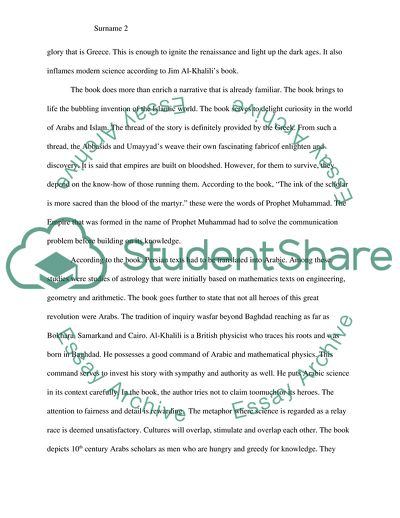Cite this document
(An Arabic Science History Book Report/Review Example | Topics and Well Written Essays - 1750 words, n.d.)
An Arabic Science History Book Report/Review Example | Topics and Well Written Essays - 1750 words. https://studentshare.org/history/1804761-arabic-since
An Arabic Science History Book Report/Review Example | Topics and Well Written Essays - 1750 words. https://studentshare.org/history/1804761-arabic-since
(An Arabic Science History Book Report/Review Example | Topics and Well Written Essays - 1750 Words)
An Arabic Science History Book Report/Review Example | Topics and Well Written Essays - 1750 Words. https://studentshare.org/history/1804761-arabic-since.
An Arabic Science History Book Report/Review Example | Topics and Well Written Essays - 1750 Words. https://studentshare.org/history/1804761-arabic-since.
“An Arabic Science History Book Report/Review Example | Topics and Well Written Essays - 1750 Words”. https://studentshare.org/history/1804761-arabic-since.


